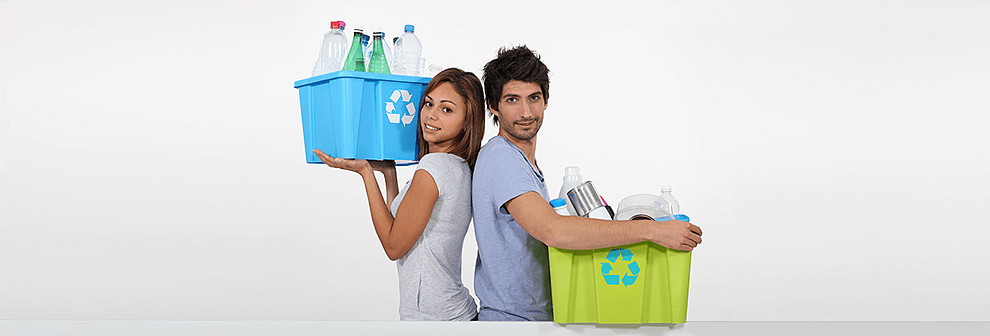Green Alternatives to Common Plastics
Posted on 02/04/2025
In recent decades, plastic pollution has emerged as one of the most pressing environmental issues worldwide. With the production of plastics exceeding 300 million tons annually, the question of how to reduce plastic waste is more critical than ever. Fortunately, green alternatives to common plastics are gaining traction, offering sustainable solutions that minimize the environmental impact and promote a healthier planet.
Understanding the Problem with Traditional Plastics
Traditional plastics are primarily composed of synthetic polymers derived from petrochemicals, such as polyethylene, polypropylene, and polystyrene. These plastics are durable, lightweight, and versatile, making them ubiquitous in modern life. However, their environmental footprint is daunting:
- Non-biodegradable: Most commonly used plastics can persist in the environment for hundreds to thousands of years, accumulating in landfills and oceans.
- Microplastic Pollution: Over time, plastics break down into tiny particles known as microplastics, which contaminate soil, water, and air, posing threats to wildlife and human health.
- Resource Intensive: The production of plastics is energy-intensive and relies heavily on fossil fuels, contributing to greenhouse gas emissions and climate change.
The urgent need for alternatives to traditional plastics has spurred innovation in materials science, leading to the development of various green alternatives.

Bioplastics: A Step Towards Sustainability
Bioplastics are an emerging category of materials designed to replicate the functionalities of traditional plastics while offering improved environmental performance. Unlike conventional plastics, bioplastics can be derived from renewable resources and exhibit varying degrees of biodegradability.
PLA (Polylactic Acid)
PLA is a biodegradable thermoplastic derived from fermented plant starches, commonly corn or sugarcane. Advantages of PLA include:
- Biodegradability: PLA decomposes in industrial composting facilities, reducing landfill waste.
- Renewable Source: PLA production utilizes renewable agricultural resources rather than fossil fuels.
- Versatility: PLA can be used in packaging, disposable cutlery, and 3D printing.
Though promising, PLA has limitations. It requires specific conditions for effective composting and may not perform well under high-temperature applications.
PHA (Polyhydroxyalkanoates)
PHA is another category of bioplastics synthesized by microorganisms under nutrient-stressed conditions. PHA stands out due to its:
- Full Biodegradability: PHA degrades naturally in various environments, including marine settings.
- Diverse Applications: PHA can be tailored for use in medical devices, packaging, and agricultural films.
However, PHA production is currently more expensive than traditional plastics, which challenges its widespread adoption.
Cellulose-Based Plastics
Derived from plant cell walls, cellulose-based plastics offer another green alternative. These plastics are created through the chemical modification of cellulose to produce materials such as:
- Cellophane: A transparent film used in food packaging that is biodegradable and compostable.
- Cellulose Acetate: Commonly used in eyewear frames and biodegradable cigarette filters.
While cellulose-based plastics are more environmentally friendly, they may not always match the durability and versatility of petrochemical-based plastics.
Starch-Based Plastics
Starch-based plastics, derived from natural starches (e.g., corn, potato, and wheat), provide another promising solution to plastic pollution. Key features include:
- Biodegradability: These materials can decompose under composting conditions, reducing long-term environmental impact.
- Low Cost: Abundant and inexpensive raw materials make starch-based plastics economically viable.
Despite their benefits, starch-based plastics may require blending with other biopolymers to enhance their mechanical properties and moisture resistance.
Recycled Plastics: A Circular Economy Approach
Recycling is a critical strategy for mitigating plastic pollution, focusing on converting waste plastics into valuable resources. This approach supports a circular economy, which aims to keep materials in use for as long as possible. Key solutions include:
Mechanical Recycling
Mechanical recycling involves the collection, sorting, cleaning, and reprocessing of plastic waste into new products. Advantages include:
- Resource Efficiency: Reduces the need for virgin plastic production.
- Carbon Footprint Reduction: Lower energy consumption compared to producing new plastics.
However, mechanical recycling has limitations, including potential contamination and degradation of plastic quality after multiple cycles.
Chemical Recycling
Chemical recycling breaks down plastics into their monomers or other basic chemicals for reuse in new plastic production. This approach can:
- Recover Mixed Plastics: Handle mixed streams and plastics that are difficult to recycle mechanically.
- Maintain Plastic Quality: Allow infinite recycling without quality loss.
While promising, chemical recycling technologies are still in development and can be energy-intensive.
Plant-Based Composites
Plant-based composites combine natural fibers with biopolymers, forming materials that can replace traditional plastics in various applications. Examples include:
- Hemp Plastic: Utilizes hemp fibers for strength and durability, ideal for automotive parts and construction materials.
- Bamboo Fiber Composites: Suitable for utensils, home goods, and packaging.
These composites offer a sustainable alternative while providing functional properties similar to conventional plastics.

The Role of Policy and Consumer Behavior
The transition to green alternatives is not solely dependent on technological advancements; policy measures and consumer behavior play significant roles. Government policies can promote sustainable practices through:
- Bans and Restrictions: Imposing bans or restrictions on single-use plastics to reduce demand.
- Incentives: Providing financial incentives for research and adoption of eco-friendly materials.
- Standards and Certification: Establishing standards for biodegradability and compostability to ensure product claims are accurate.
Consumers can also contribute by making informed choices, such as opting for products made from green alternatives, supporting businesses committed to sustainability, and participating in recycling programs.
Conclusion
The challenges posed by traditional plastics are significant, but the development of green alternatives offers a pathway to a more sustainable future. By embracing bioplastics, recycled plastics, plant-based composites, and supportive policies, society can reduce plastic pollution and mitigate its environmental impact. The collective efforts of governments, industries, and consumers are crucial in driving the adoption of these green alternatives, ensuring the health and wellbeing of our planet for generations to come.




